Bower Spinach
Back | Salinity Indicator Plants Home | Common name home | Scientific name home | Photo Gallery | Glossary
]
| Bower Spinach photos | Family: Pigface (Aizoaceae) |
| Scientific Name: | Tetragonia implexicoma | 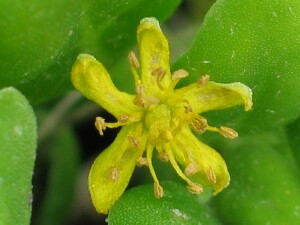 Bower Spinach flower Photo: A J Brown | |||||
Status: | Native to Victoria, Western Australia, South Australia, New South Wales and Tasmania. | ||||||
Plant Description: | Prostrate, trailing or climbing plant with branches to 3 m long or more and sometimes forming mounds. Leaves are rhombic to angular-ovate, 1.5-6 cm long and 0.8-4 cm wide, papillose (pimple-like covering) and semi-succulent. Flowers are strongly scented, solitary or rarely paired, and on stalks 5-30 mm long. Perianth segments (flower-like bracts) are 4 in number, shortly incurved at the apex, yellow on the inside and densely hairy outside. Flowering from August to November. Fruit are succulent orange-red berries which ripen to near black. | ||||||
Habitat: | Common along the coastline on cliffs, sand dunes and in foreshore scrub but occasionally extending inland along tidal or brackish waterways.
| ||||||
Comments: | Bower Spinach is in the Pigface family (Aizoaceae) but has dissimilar flowers. Differs from New Zealand Spinach by its 4 perianth segments (instead of 5), its yellow flowers and succulent fruit. Used as a valuable leaf vegetable by indigenous Australians and by early European sailors and settlers as a source of vitamin C to ward off scurvy. The berries were used as a source of red dye. | ||||||
Bower Spinach photos
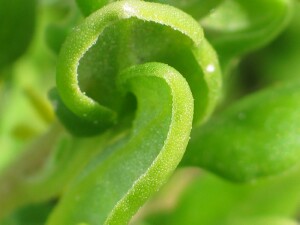 Bower Spinach leaf edge Photo: A J Brown | 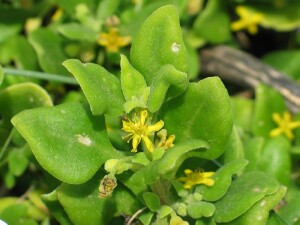 Bower Spinach leaves and flowers Photo: A J Brown |
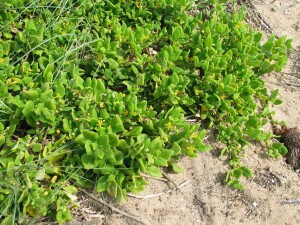 Bower Spinach plant Photo: A J Brown | 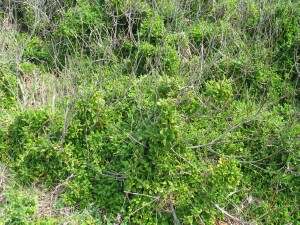 Scrambling Bower Spinach plant Photo: A J Brown |
 Bower Spinach leaves and stems Photo: A J Brown | 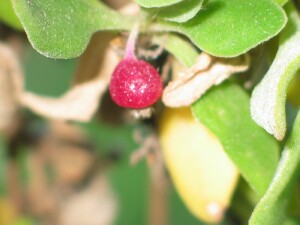 Ripe berry of Bower Spinach Photo: A J Brown |


